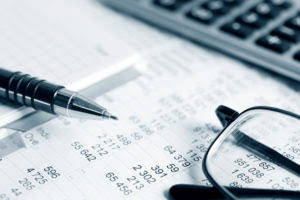Content
- Straight Line Depreciation Calculator
- Create contra account for accumulated depreciation
- Why Straight Line Depreciation Matters
- Other Depreciation Methods
- Showing depreciation on the balance sheet
- What are the other methods of depreciation?
- Lease Liability Amortization Schedule: How to Calculate It in Excel

The “2” in the formula represents the acceleration of deprecation to twice the straight-line depreciation amount. However, when using the double-declining balance method of depreciation, an entity is not required to only accelerate depreciation by two. They are able to choose an acceleration factor appropriate for their specific situation. A change in the estimated salvage value or a change in the estimated useful life of an asset that is being depreciated is not considered to be an accounting error. As a result, the financial statements that have already been distributed are not changed. The most common method of depreciation used on a company’s financial statements is the straight-line method. When the straight-line method is used each full year’s depreciation expense will be the same amount.
Your CMMS can track an asset’s value and anticipate depreciation over its useful life. If you’re using the straight line depreciation method, you can set expectations on how the total devaluation of an asset will be distributed over time and recorded in the depreciation schedule. At any point in an asset’s useful life, its projected depreciation can give you hints on whether it is more financially beneficial to repair the asset or to replace it altogether. When calculating a business’s contra account, bad debts, depletion and depreciation of the company’s assets are all crucial deductions to make.
For example, assume you just purchased 15 new office desks for your employees. You expect to resell each desk for $20, or $300 total, at the end of seven years. To calculate the straight-line depreciation, you subtract $300 from $4,500 and divide by 7. Each year, for seven years, you will record $600 of depreciation. Straight-line depreciation posts the same amount of expenses each accounting period . But depreciation using DDB and the units-of-production method may change each year.
Why would you not depreciate a rental property?
If your total rental expenses exceed your rental income, the annual depreciation of your home does nothing to reduce your taxes. This creates a scenario where it seems to make sense to skip depreciation, so that you have a higher tax basis for the future sale of your property.
With straight-line depreciation, you must assign a “salvage value” to the asset you are depreciating. The salvage value is how much you expect an asset to be worth after its “useful life”. Suppose an asset for a business cost $11,000, will have a life of 5 years and a salvage value of $1,000. The straight line calculation, as the name suggests, is a straight line drop in asset value. The first step is to calculate the numerator – the purchase cost subtracted by the salvage value – but since the salvage value is zero, the numerator is equivalent to the purchase cost. Typically, the salvage value (i.e. the residual value that that asset could be sold for) at the end of the asset’s useful life is assumed to be zero.
Straight Line Depreciation Calculator
The useful life of this machine is six years, and the salvage value in eight years will be $900. You want to compute yearly depreciation expense, using the straight-line method. If an asset is put into service in the middle of the accounting year, most tax systems require https://www.bookstime.com/ that the depreciation be prorated. The most common method of proration is called the half-year convention. Assuming a fiscal year ending December 31, under the half-year convention the asset is considered to have been put into service on July 1st of the year.
You can use a basic straight-line depreciation formula to calculate this, too. To calculate straight line basis, take the purchase price of an asset and then subtract the salvage value, its estimated sell-on value when it is no longer expected to be needed. Then divide the resulting figure by the total number of years the asset is expected to be useful, referred to as the useful life in accounting jargon. What are the pros and cons of straight line depreciation versus accelerated depreciation methods? Here’s how you can decide if straight line depreciation is right for your business. The total depreciation over the asset’s useful life is $40,000, and the machine produces 100,000 units. The amount of expense posted to the income statement may increase or decrease over time.
To use the straight-line depreciation, determine the expected economic life of an asset. Now, take a look at the table below to see how the value of the device depreciates over its useful lifetime. Below we will describe each method and provide the formula used to calculate the periodic depreciation expense. The combination of an asset account’s debit balance and its related contra asset account’s credit balance is the asset’s book value or carrying value.
Let’s say, for instance, that a hypothetical company has just invested $1 million into long-term fixed assets. Divide the estimated useful life into 1 to arrive at the straight-line depreciation rate. Check out our guide to Form 4562 for more information on calculating depreciation and amortization for tax purposes. Straight-line depreciation is a simple method for calculating how much a particular fixed asset depreciates over time. This is sometimes referred to as the residual value, scrap value, or salvage value. You don’t depreciate the salvage value of the asset because it’s the amount you expect to recover at the end of the assets useful life. The expenses in the accounting records may be different from the amounts posted on the tax return.
Create contra account for accumulated depreciation
In the straight line method of depreciation, the value of an asset is reduced in equal installments in each period until the end of its useful life. Residual value is the estimated value of a fixed asset at the end of its lease term or useful life.
- Straight line depreciation math time — You know that the difference between the $20,000 book value and the $5,000 salvage value when you’re done using the car is $15,000.
- If you expect to use the asset more often in the early years and less in later years, choose an accelerated straight-line depreciation rate.
- The IRS has tables that they have put together for this purpose.
- Accumulated DepreciationThe accumulated depreciation of an asset is the amount of cumulative depreciation charged on the asset from its purchase date until the reporting date.
- Bookkeeping for straight-line depreciation involves increasing the depreciation expense account on the company’s income statement and increasing accumulated depreciation on the balance sheet.
- Applied to this example, annual depreciation would be $17,000, or ($100,000 – $15,000) / 5.
After an asset has been fully depreciated, it can remain in use as long as it is needed and is in good working order. To learn how to handle the retiring of assets, please see last section of our tutorial Beginner’s Guide to Depreciation. Let’s look at the full five years of depreciation for this $10,000 asset we have purchased. The first image below shows the the asset’s value each year, the percentage used each year (20%) and the amount of depreciation we are taking for each of the five years of this asset’s useful life ($2,000).
Each person should consult his or her own attorney, business advisor, or tax advisor with respect to matters referenced in this post. Bench assumes no liability for actions taken in reliance upon the information contained herein. Depreciation is an expense, just like any other business write-off. So you’ll want to make sure you calculate depreciation properly. Its scrap or salvage value of the asset—the price you think you can sell it for at the end of its useful life. Investopedia requires writers to use primary sources to support their work.
Why Straight Line Depreciation Matters
The Salvage Value is the estimated cost of the asset at the end of its useful life. The reason they call it a straight line depreciation might become more apparent if we graph out the value of an asset in an example. Let’s pretend that you have a business and you just bought a car.
It can also help offset some of the costs of business growth and expansion, encouraging business owners to reinvest in the business. Straight line depreciation math time — You know that the difference between the $20,000 book value and the $5,000 salvage value when you’re done using the car is $15,000. It’s over a ten-year period, so every year you’re going down $15,000 divided by ten years so that would be $1,500 a year. This is the book value and not what you think you could sell it for in the market. We’ve broken down straight line depreciation for you into 4 easy steps. How the IRS defines and calculates different types of income affects taxes due.
Other Depreciation Methods
This article defines and explains how to calculate straight-line depreciation. In addition to this, learn more about ways to calculate the expense, and how depreciation impacts financial statements. While operating expenditures are tax-deductible during the year they are incurred, capital expenditures are not.
This means that it will likely underestimate the cost of owning and using this type of asset. It allows you to calculate your yearly tax obligation based on the cost, residual value, number of years that you expect to use the asset, and rate of straight-line depreciation. After the financial statements are distributed, it is reasonable to learn that some actual amounts are different from the estimated amounts that were included in the financial statements. Depreciation is recorded in the company’s accounting records through adjusting entries. Adjusting entries are recorded in the general journal using the last day of the accounting period. But, you don’t have to do it yourself, especially if you run a large company with many assets that are liable to depreciation.
The straight-line depreciation method posts an equal amount of expenses each year of a long-term asset’s useful life. Business owners use it when they cannot predict changes in the amount of depreciation from one year to the next. Depreciation expenses are posted to recognise a fixed asset’s decline in value. The straight-line method is the most common method used to record depreciation.
Showing depreciation on the balance sheet
As the value of an asset decreases over the years due to wear and tear, the amount shown on an accounting balance sheet will affect annual income. Unlike the other methods, the units of production depreciation method does not depreciate the asset solely based on time passed, but on the units the asset produced throughout the period.

Estimate the asset’s salvage value, or how much it can be sold for at the end of the useful life. Straight-line amortization schedules are simple and reduce the amount of required record-keeping. According to straight-line depreciation, your MacBook will depreciate $300 every year. The useful life of the asset—how many years you think it will last. Full BioAmy is an ACA and the CEO and founder of OnPoint Learning, a financial training company delivering training to financial professionals.
What are the other methods of depreciation?
The useful life is represented in terms of years the asset is expected to be of economic benefit. Straight-line depreciation is a popular method for allocating the cost of fixed assets over the duration of their useful lives. This method relies on the passage of time to calculate a consistent amount of depreciation charges in each accounting period.
- If the use of an asset will vary greatly from year to year, the units-of-production method may be appropriate.
- Finishing the formula, the business finds the asset’s annual depreciation amount is $4,000.
- When you connect all those dots in a line, you’re going to get a straight line, so that’s why it’s called straight line depreciation.
- You would not use this method if you expect to depreciate an asset much more quickly than the average rate of straight-line depreciation, for example, a computer that is expected to quickly become obsolete.
- The straight line calculation, as the name suggests, is a straight line drop in asset value.
- Our depreciation charges go to accumulated depreciation, which offsets the cost account of the fixed asset on the balance sheet.
The expense is posted to the income statement, and the accumulated depreciation is recorded on the balance sheet. Accumulated depreciation is a contra asset account, so the balance is a negative asset account balance. This account accumulates the depreciation posted each year, and each asset has a unique accumulated depreciation account. Capital expenditures differ from operating expenditures in several ways. Since capital expenditures are those purchases that will be used over several years, the cost of those expenses are also spread out over the same amount of time for accounting and tax purposes. On the other hand, operating expenditures are smaller and tend to be incurred in a single accounting period. They are usually purchased and used in the same time frame, so companies place them in a separate budget category.
How Does a Capital Expenditure Differ From an Operating Expenditure?
These include white papers, government data, original reporting, and interviews with industry experts. We also reference original research from other reputable publishers where appropriate. You can learn more about the standards we follow in producing accurate, unbiased content Straight Line Depreciation in oureditorial policy. Daniel Liberto is a journalist with over 10 years of experience working with publications such as the Financial Times, The Independent, and Investors Chronicle. He received his masters in journalism from the London College of Communication.
- If a company issues monthly financial statements, the amount of each monthly adjusting entry will be $166.67.
- It’s used to reduce the carrying amount of a fixed asset over its useful life.
- Combining the total asset and accumulated depreciation amounts equals a net book value of $0.
- You can then depreciate key assets on your tax income statement or business balance sheet.
- It’s calculated by subtracting the salvage value of an asset from its cost.
- It is calculated by simply dividing the cost of an asset, less its salvage value, by the useful life of the asset.
The easiest way to determine the useful life of an asset is to refer to the IRS tables, which are found in Publication 946, referenced above. If you don’t expect the asset to be worth much at the end of its useful life, be sure to figure that into the calculation. Here are some reasons your small business should use straight line depreciation. Contra AccountContra Account is an opposite entry passed to offset its related original account balances in the ledger. It helps a business retrieve the actual capital amount & amount of decrease in the value, hence representing the account’s net balances.
Lease Liability Amortization Schedule: How to Calculate It in Excel
Instead, the credit is entered in the contra asset account Accumulated Depreciation. The estimated useful life value used in our calculations are for illustration purposes. If you are calculating depreciation value for tax purposes, you should get the accurate, useful life figure from the Internal Revenue Agency . When keeping your company accounting records, straight line depreciation can be recorded on the depreciation expense account as debit and credit on the accumulated depreciation account. The other popular methods used in calculating depreciation value are; Sum of years method or unit of production method and double declining balance method.
- The current value is based on the purchase price and is $20,000.
- Depreciation expenses to determine how to reduce a capital asset’s value over its useful lifetime for tax purposes.
- This method is also not appropriate if the salvage value varies over time.
- Additionally, the consistent charges assist operating profitability and cash flow analysis, since they are easily identified and removed.
- If this was the company’s only asset, the Balance Sheet would show a zero balance for Fixed Assets.
Depreciation expense allocates the cost of a company’s use of an asset over its expected useful life. The expense is an income statement line item recognized throughout the life of the asset as a “non-cash” expense. When the asset’s book value is equal to the asset’s estimated salvage value, the depreciation entries will stop. If the asset continues in use, there will be $0 depreciation expense in each of the subsequent years. The asset’s cost and its accumulated depreciation balance will remain in the general ledger accounts until the asset is disposed of. As a business owner, knowing how to calculate straight line depreciation of your company’s fixed assets is crucial to your business’s success. A fixed asset account is reduced when paired with accumulated depreciation as it is a contra asset account.
It is employed when there is no particular pattern to the manner in which an asset is to be utilized over time. Use of the straight-line method is highly recommended, since it is the easiest depreciation method to calculate, and so results in few calculation errors. Whether you’re creating a balance sheet to see how your business stands or an income statement to see whether it’s turning a profit, you need to calculate depreciation.



